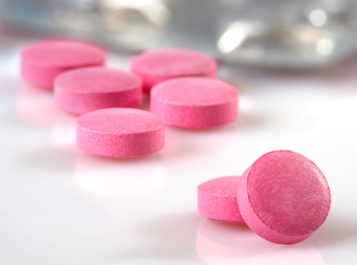
Myth #1: ‘Overweight’ means ‘unhealthy’
A debate has raged in medicine for years: Can you be fat and fit?
To a degree, this debate boils down to a numbers game. Many doctors use body mass index (BMI) to determine whether a patient’s weight is healthy or unhealthy. The BMI is a number that describes the ratio of your weight to your height. According to the Centers for Disease Control and Prevention, having a BMI under 25 means your weight is normal, 25 to 25.9 means you are overweight, and 30 or higher means you are obese. It’s clear, however, that this breakdown is oversimplified and in some cases inaccurate. For starters, many buff athletes with chiseled pecs and bulging biceps have high BMIs, since muscle weighs a lot.
More important, research has shown that a person’s weight isn’t necessarily the best measure of overall health. One study of thousands of men by researchers at the Cooper Institute in Dallas underscored this fact. Researcher Steven N. Blair, PED (who once told the New York Times, “I may be short, fat, and bald, but I’m fit.”), led a team that tracked more than 25,000 men over 23 years. They recorded who got sick and who died and who didn’t.
In the end, Blair and his colleagues surprised the world by showing that men who were overweight or obese but exercised regularly had half the death rate of normal-weight men who were out of shape. In fact, Blair’s study found that being in poor physical condition was far more dangerous than simply being overweight, increasing the risk of premature death as much as having type 2 diabetes, high blood pressure or cholesterol, or smoking cigarettes does.
While this study suggests that heavyweights can be healthy people, it’s important to keep in mind that lugging around a lot of abdominal fat does appear to be unhealthy. In fact, having a big belly increases the risk of heart disease and type 2 diabetes. (What’s big? For men, 40 inches or more; for women, 35 inches or more. To measure your waist, wrap a tape measure around your bare abdomen just above the hipbones so it’s snug but not tight. Inhale, exhale, and measure.) Fortunately, exercise burns belly flab, which is all the more reason to keep hitting the treadmill if you’re overweight.

Myth #2: Your fate is already sealed
You often hear this kind of fatalistic remark from people whose parents died young of heart attacks or cancer: “What’s the point of jogging and eating broccoli if my lousy genes are going to kill me anyway?” Furthermore, each passing week seems to bring news that scientists have discovered yet another “disease gene.” If our health destinies are preprogrammed, does it really matter whether we take care of our bodies?
In short, yes. The so-called breast cancer gene, BRCA1, offers a good example. There’s no doubt the gene is powerful: Some 60 to 80 percent of women who have a mutation of this gene will develop breast cancer as compared to 13 percent of women who don’t have the mutation. But that means that as many as 40 percent of women who inherit a BRCA1 mutation never develop breast cancer, suggesting that perhaps their lifestyle choices give them some protection.
What’s more, scientists believe that the majority of cancer cases are not caused by inherited bad genes. Swedish researchers looked at the incidence of various cancers among nearly 45,000 sets of twins and concluded that “genetic factors make a minor contribution to susceptibility” to most forms of the disease. The evidence clearly shows, they stated, that the environment a person lives in has by far the greater influence on cancer risk.
The same scenario seems to hold true for other diseases that can rob you of years. Imagine a pie chart representing all the factors that influence how long you will live. Many studies suggest that the genes you inherited from your parents make up only about one-third of the pie, and maybe less. The other items in the pie include diet, physical activity level, and personal habits, such as tobacco use and alcohol consumption. In other words, you can’t change your DNA, but what makes up the rest of the pie is largely up to you.

Myth #3: Prescription drugs are guaranteed safe
About 10 percent of prescription drugs that hit the market are later discovered to cause serious side effects that didn’t turn up in clinical trials. With that in mind, you might think that pharmaceutical companies would want to keep close track of whether people become ill when they take new drugs the companies market. In fact, the FDA requires them to do just that. Yet drug companies fail to perform these follow-up studies 70 percent of the time, says Paul Brown, a consumer health advocate with the US Public Interest Research Group.
That’s why Merrill Goozner recommends that you change the channel or turn the page when you see an advertisement for a new drug. Goozner is director of the Integrity in Science project for the Center for Science in the Public Interest (another consumer watchdog group) and author of The $800 Million Pill: The Truth Behind the Cost of New Drugs. “There is no place for those ads in the practice of medicine,” he says.
That doesn’t mean new drugs have no value. If there are currently no medications available to treat your condition, and there’s solid evidence that a new medication is effective without causing intolerable side effects, the new drug could offer some hope. However, if a heavily hyped new drug would merely replace a medication that’s currently working well for you, then why switch and expose yourself to unknown risk? If your doctor recommends doing so, ask why.

Myth #4: Hospitals are sterile houses of healing
It’s tempting – and certainly convenient – to believe that hospitals are squeaky clean and sterile. You’d like to think the floors, or at least other surfaces, are so immaculate you could eat off them. But it’s simply not the case.
Despite many hospitals’ diligent attempts to keep hospital-acquired infections under control, your room and even your doctor probably carry nasty drug-resistant germs that could kill you, or at least make you very sick and keep you in the hospital longer – exposing you to even more germs. Microbes such as bacteria that cause staph infections lurk on bed rails, bedside tables, IV poles, and various pieces of equipment that touch you. According to the Centers for Disease Control and Prevention, 1.7 million people develop infections while staying in, or immediately following discharge from, U.S. hospitals each year. Nearly 100,000 die.
Human error is partly to blame. For instance, doctors all too often neglect to take the simple step of washing their hands between patients, and most don’t disinfect the stethoscope that recently touched another patient’s chest.
Germs aren’t the only deadly dangers. We’ve already mentioned the disturbing problem of medical errors, which are common enough to be the eighth leading cause of death in the United States. Among the most common blunders that occur in hospitals are mistakes in prescribing and administering medications. For many in-patients, receiving the wrong drug or an incorrect dose is as much a part of the hospital experience as bad food. According to “Preventing Medication Errors,” a recent report by the Institute of Medicine, the typical hospital patient either gets the wrong medicine, receives the incorrect dose, or fails to receive a needed medication at least once per day.

Myth #5: Sleep isn’t that important
Given the hectic lives we lead today, eight or nine hours of sleep may seem like a delicious indulgence we just can’t afford. But research suggests that if you’re concerned about your health, you can’t afford not to get enough shuteye.
Sleep does far more than give you the energy you need to get through the day and help you cope with stress. For one thing, it helps you keep your weight in check. Studies suggest that sleep deprivation leads to increased levels of the hormone grehlin, which triggers hunger, and decreased levels of leptin, which signals fullness. The result: You eat more.
Lack of sleep also affects the immune system. Rats deprived of sleep die, most likely because of an immune system breakdown that allows an influx of deadly bacteria. Sleep deprivation may also increase levels of inflammatory chemicals in the body, and inflammation is now known to contribute to a host of serious diseases, from diabetes to heart disease to cancer.
If you “forgot” to get enough sleep last night, you may start forgetting other things, too.
Failing to log enough pillow time can contribute to depression, make high blood pressure worse, and even raise your blood sugar. A Harvard Medical School study found that women who slept five or fewer hours per day were nearly a third more likely to develop diabetes than women who got a more reasonable amount of sleep.
Finally, during sleep, the body appears to repair damaged brain cells and “reorganize” the brain, possibly affecting learning and memory. If you “forgot” to get enough sleep last night, you may be forgetting other things, too.

Myth #6: The placebo effect is negligible
Tell that to your brain, though it probably won’t believe you.
The word placebo, from the Latin for “I shall please,” first turned up in medical texts in the 18th century, defined as a treatment intended to make a patient happy rather than do any actual healing. So why do placebos sometimes work?
Placebos are often called sugar pills, and indeed, they’re sometimes tablets made of sugar or starch, though a placebo can be any form of faux medical therapy or treatment made to look like the real thing. Scientists include placebo groups in clinical trials thanks to the work of anesthesiologist Henry K. Beecher, MD. In 1955, Dr. Beecher analyzed 15 studies in which patients with various diseases had received placebos and found that about 35 percent of them responded as though they had received real treatments.
This finding had major implications for the study of new drugs and other therapies, since it suggested that about one-third of sick people get better if they think they’re receiving treatment. As a result, when scientists conduct a clinical trial of a new drug or therapy today, they have to account for the placebo effect. An experimental therapy is usually considered a flop if it fails to treat significantly more than 35 percent of the patients who receive it.
Some recent studies have cast doubt on Dr. Beecher’s 35 percent rule and on the concept of the placebo effect in general. However, studies show that placebo treatments are surprisingly effective for a variety of conditions, including Parkinson’s disease, depression, and gastrointestinal problems such as irritable bowel syndrome. Conditions with the highest response rates tend to be those with symptoms that are difficult to quantify, such as pain.
Skeptics claim that any response to a placebo is “all in your head.” They’re right, in a sense. Sophisticated medical imaging shows that people given placebos experience significant changes in brain chemistry. At least 30 studies have shown that when people who are experiencing some form of pain are told they will receive a pain reliever but are given a placebo instead, their bodies nonetheless produce morphine-like compounds called opioids.
More important, placebos seem to diminish pain. In one study, researchers applied heat to the skin of volunteers until it hurt. Then they slathered a phony cream on the sore skin, telling the volunteers that the salve contained soothing medication. More than 70 percent of the volunteers said the placebo cream relieved their pain.
“The brain has the capability to exert control over the rest of the body, but we really don’t know how it works,” says Columbia University research psychologist Tor D. Wager, PhD, who led the study.
The placebo effect appears to go beyond pain reduction. For instance, in a recent experiment, asthma patients who believed they were receiving the drug salmeterol but were given placebos not only felt better but also had improvement in their lung function, though not as much as people who received the real drug.
